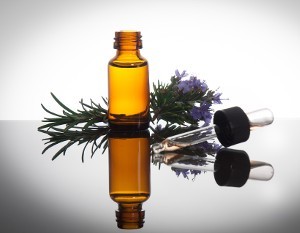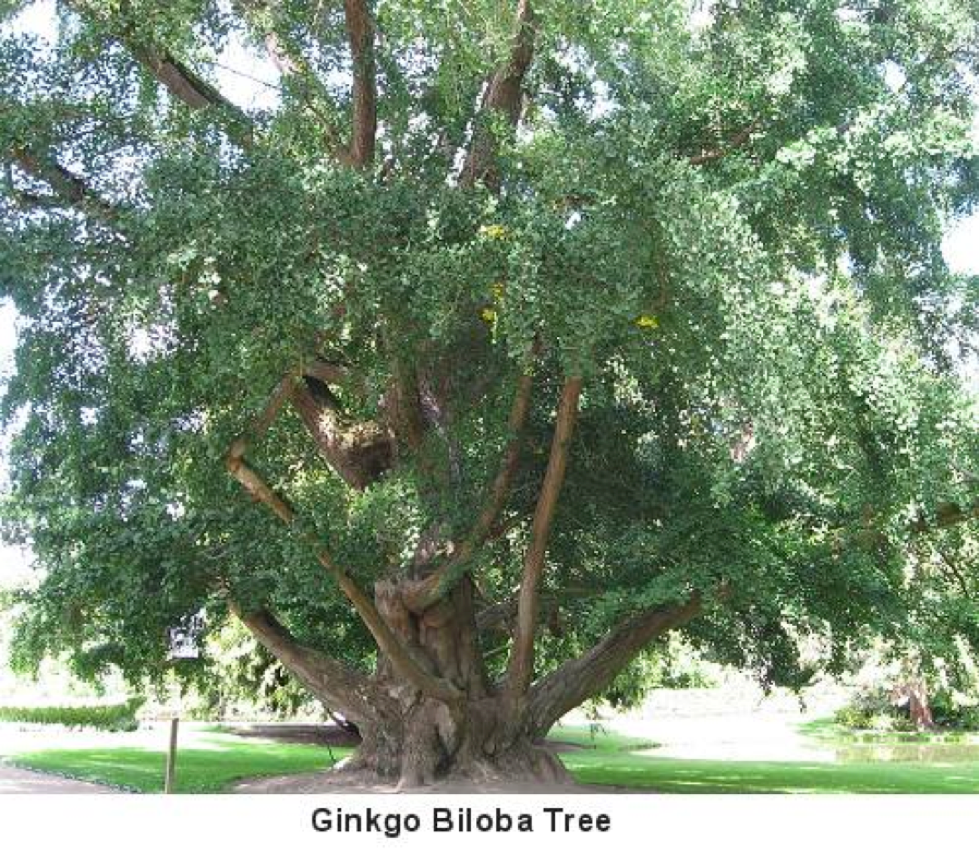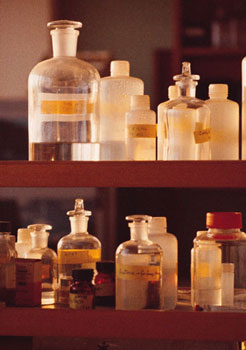Disclaimer: The information on curenaturally.org is intended to improve your knowledge about herbs and their benefits. Articles on this website are not intended to replace medical treatment from your doctor. Always consult your doctor before starting a new treatment regimen.
Page Update 07/25/2019
Herbs for Men’s Reproductive Health
By Dr. Ashraf Girgis N.D.

Men, like women, have always been after the elixir of youth. Although most women seek an elixir that soothes their wrinkles, men seem to be more interested in the health of their reproductive system: higher energy and a better sex life (although recently, men seem to be spending as much money in looking younger, too. The sales of Viagra in 2015 reached $48.851 billion, a clear indicator of this trend (although Viagra has been used in other situations and diseases as well).
Sexual dysfunction is a serious medical and social symptom that occurs in 10-52% of men and 25-63% of women. ED, or erectile dysfunction, is the main reason for male impotence. It is estimated that 20-30 million men suffer from some degree of sexual dysfunction. The causes of ED can be many, including stress, anxiety, depression, and fear of sex. Each issue needs to be addressed properly in order to resolve ED.
In this article, I would like to simply bring attention to several herbs that can address these issues. However, please make sure to discuss the problem with your family physician before taking any of these herbs. For example, if you are stressed, overworked, and tired, then your focus should be on the factors that lead to those emotions. Changing your lifestyle and diet can bring the desired results instead of looking for drugs or herbs.

|
|
|
1. Saffron (Crocus sativus)
Saffron, or Crocus Sativus, belongs to the Iridaceae family. It is an herb that originated in Iran (Persia) and has grown their since ancient times. Saffron is what gives the yellow color to Iranian rice and many other dishes. It has also been noted in the Assyrian botanical treatise (7th-century BC) for its medicinal benefits. Currently, Iran is the exporter of 90% of the saffron across the world. Romans also used Saffron, and the Chinese have shown their use of Saffron for medicinal purposes. Spain, Greece, and Indian Kashmir are among the many other countries cultivating saffron.
Constituents
Saffron contains bitter compounds and more than 150 volatile oils, glycosides, aromatic compounds, and carotenoids but the main reason for its orange colors are α-crocin. The bitter glycoside compound picrocrocin is responsible for saffron's flavor. Saffron also contains lipids, minerals, mucilage, and various carotenoids.
|
 |
|
|
|
|
Medicinal benefits.
-Studies demonstrated that saffron extract and its active compounds have anticonvulsant (1), antidepressant (2), anti-inflammatory (3), and anti-tumor activities (4). It is also reported that saffron extract can affect learning behavior and improve memory (5). Additionally, saffron can be useful in the prevention of Parkinson’s disease (Royan Institue International Journal of Fertility and Sterility Feb-Mar 2010).
According to a study done by Iranian scientists(Ali Shamsa et al 2009)" Saffron showed a positive effect on sexual function with increased number and duration of erectile events seen in patients with ED even only after taking it for ten day"(https://doi.org/10.1016/j.phymed.2009.03.008)
The part of Saffron used is the mature stigmas; they are collected by hand during a short blooming season. That is why saffron is very expensive. Saffron is used for coloring as seen in Buddhists monk. In the United States, good quality Persian saffron is $30 per ounce.
No drug interaction with Saffron has been reported according to drugs.com.
Side Effects
As for side effects, there has been one anaphylaxis case and 15 cases of seasonal allergies reported .For dosage, follow the instructions on the extract container.
|
|
|
|
|
2. Saw Palmetto (Serenoa repens/Sabal serrulata)
Saw Palmetto, also known as Serenoa, is an American botanical plant from the family of Arecaceae or Palmaceae. Saw palmetto berries were a staple food for Native Americans. Traditionally, it has been used to treat infertility, increase sperm, boost libido, and treat impotence. Saw palmetto was listed in the United States pharmacopeia between 1906-1917. Saw palmetto was used for urogenital ailments from 1925 to 1950. It later lost favor thanks to the rise of pharmaceutical companies. However, in the 1960s the German and French started researching it, and used it as an herbal remedy. It is currently being used in Europe, and recently interest has returned to the United States as well. Native Americans have used saw palmetto for impotence, inflammation, infertility, and as an expectorant. Also, it has been used for the past 200 years for recovery from major illness and urogenital problems, as well as an aphrodisiac.
Constituents
Saw palmetto contains major fatty acids (laurate, myristate, palmitate, stearate, oleate, linoleate) and phytosterols (campesterol) in addition to polysaccharide (sugar).
Medicinal benefits.
In Germany, saw palmetto extracts made one third of sales for all therapeutic agents used in treatment of benign prostatic Hyperplasia or enlarged prostate (BPH) in 2000 (Levin Das). Currently, there are 3 different types of preparation in Germany. Fatty acids and sterols seem to be the active ingredient in saw palmetto for it medicinal propriety. German standards demand to have saw palmetto extract contain at least 80-95% fatty acid and sterols.
|

|
|
|
|
|
Medicinal benefits.
A number of studies have shown sufficient evidence that saw palmetto is effective for stages 1 and 2 of BPH. In a 2002 review by Cochrane et al, the result of 21 trials involving 3139 men concluded that saw palmetto is good for improving urinary flow and symptoms of BPH when compared to a placebo. Another study used a product called Permixon in France. Permixon is a mixture of free fatty acids and their esters, in addition to various polyprenic compounds. It was used on 4280 patients for a six-month period, and showed significant improvement in urine flow and reduction of nocturia (the need to urinate at night). In a double blind study, there was a positive response in 60% of participants in the treatment of alopecia (Prager et al 2002). Animal studies have shown that saw palmetto decreases the size of tumor cells. This could possibly be used in the treatment of prostate cancer. Additionally, it may be anti-inflammatory and good for strengthening the immune system.
Dosage,
For dosage of extract, please follow the labeling instructions. For dried berries, take 2-4 grams daily. Tea made of berries might not be effective, as the fatty acids in berries are the most active ingredients and are not soluble in water.
Side effects,
Some minor gastrointestinal issues such as nausea, abdominal pain, and diarrhea have been reported. However, it has been suggested that these minor symptoms are resolved if the herb is taken with meal (Maccagnano et al 2006).
According to drugs.com, there are a total of 61 drugs that interact with saw palmetto. Among them are blood-thinning medicines such as Warfarin (Coumadin), Clopidogrel (Plavix), and Aspirin. It may make oral contraceptives less effective. Saw palmetto also interacts with the absorption of iron.
Make sure your doctor is aware before you take any herbs, and be certain there is no interaction with any medicines you may be taking.
|
|
|
|
|
|
Ginkgo (Ginkgo Biloba)
Ginkgo is one of the oldest living tree species. It belongs to the Ginkgoaceae family. Its existence has been traced back to 200 million years ago. It originated in China in the mountainous valleys of Zhejiang, and was also common in North America and Europe before the ice age (Singh et al 2008).
Currently, Ginkgo Biloba trees are grown in China, the United States, and France. The United States produces 8000 tons of dried leaves each year.Other names for Ginkgo are the Maidenshair tree (UK) and Ginkyo.
Constituents
Its constituents are flavonoids (antioxidants) and terpenoids. Ginkgo has a total of 40 components, but only these two are believed to have medicinal benefits.
Medicinal benefits.
Because Ginkgo promotes vasodilation and improves blood flow through the bodies’ vasculature, it has been used in a wide variety of situations. That includes sexual dysfunction, where the cause is compromised circulation. When used in a study conducted among individuals with sexual dysfunction and depression, a 91% success rate was noted among women and 76% among men (Cohen & Bartlik 1998). In another study, it was found that the sexual dysfunction was caused by the use of anti-depression drugs. In another study conducted over 8 weeks, scientists found out that sexual dysfunction improved when it was combined with a sex therapy session. Gingko has also been effective in treating age related diseases such as memory loss, dementia, and Alzheimer’s (Le Bars et al 2000, 2002, Wettstein1999). In women, Ginkgo improved symptoms of PMS.
There has also been some improvement seen in tension glaucoma patients (Chung et al 1999), and improvement in Macular degeneration due to the flavonoids found in Ginkgo.
G. Biloba is used for peripheral vascular diseases and Raynaud’s syndrome as well (Ernst and pittler 2000). Improvements in anxiety has also been noted after 4 weeks in a trial (Woek et al 2006). In a 2006 review, the use of G. biloba is considered safe for reducing cancer incidents (Herbs and Natural supplements. P.503). The part of Ginkgo used is the leaves; do not use the fruit or seeds.
|

|
|
|
|
|
Dosage,
For dosage, please follow the instructions on the extract or tablets. Standardized extracts usually contain 24-32% flavonoids (also known as flavone glycosides or heterosides) and 6-12% terpenoids (triterpene lactones).
Side effects,
As always, please make sure to consult your doctor prior to adding any herbs to your diet. If you get any bleeding or bruises, stop consuming Ginkgo right away. G. biloba has to be stopped at least a week prior to any surgical procedures. There have been cases of headache, skin problems and dizziness with the consumption of Ginkgo.
Drug interactions:
G biloba can interact with all medications that are processed though the liver. Again, please consult with your doctor before starting any herbs. For the official list of interactions, please visit: http://umm.edu/health/medical/altmed/herb/ginkgo-biloba
Thanks,
Ashraf Girgis,ND
|


|
References:
1.Hosseinzadeh H, Khosravan V. Anticonvulsant effects
of aqueous and ethanolic extracts of Crocus sativus L.
2. Karimi G, Hosseinzadeh H, Khaleghpanah P. Study of antidepressant effect of aqueous and ethanolic of crocus sativus in mice. Iranian J Basic Med Sci. 2001; 4: 11-15. 6. Hoss
3. Hosseinzadeh H, Younesi HM. Antinociceptive and
anti-inflammatory effects of Crocus sativus L. stigma and
petal extracts in mice. BMC Pharmacol. 2002; 2: 1-8.
4. Escribano J, Alonso GL, Coca-Prados M, Fernandez JA. Crocin, safranal and picrocrocin from saffron (Crocus sativus L.) inhibit the growth of human cancer cells in vitro. Cancer Lett. 1996; 100: 23-30
5. Hosseinzadeh H, Modaghegh MH, Saffari Z. Crocus Sativus L.
6.(Saffron) extract and its active constituents (crocin and safranal) on ischemia-reperfusion in rat skeletal muscle. Evid Based Complement Alternat Med. 2009; 6(3): 343-350. 9. Ahmad AS, Ansari M
https://www.sciencedirect.com/science/article/pii/S0944711309000762#!
Have Any Feedback For Our Article?
Let Us Know Below
|
|
|
|